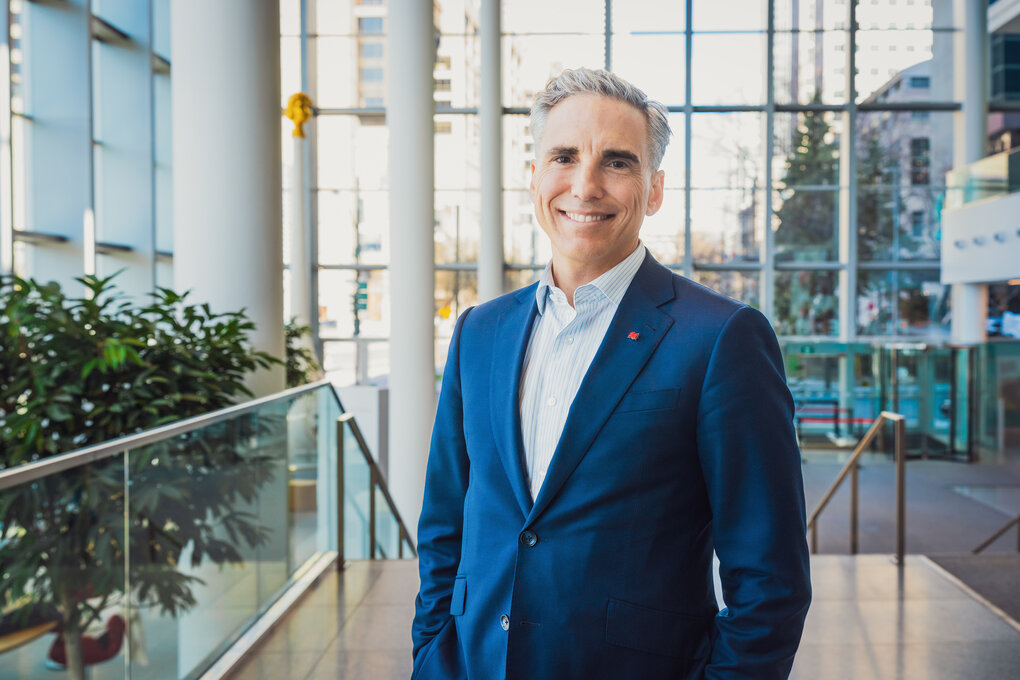Non-green real-estate assets, called “brown” real estate, could become dead assets within a decade, he adds. That’s due to increasing regulation, higher energy costs, growing demand from tenants seeking net-zero properties, and greater public expectations for sustainable development.
“Existing buildings are already starting to get hurt by new regulations,” says Mr. Demers.
He points to the rising price on pollution set out by the federal and provincial governments. Some provinces will also be hard hit by increases in the cost of carbon offsets.
Building regulations are changing too, including Canada’s National Building Code. It tightens requirements for energy consumption and efficiency of new buildings, and renovations for existing properties. The move toward net-zero is central to efforts of governments at all levels to meet climate-change commitments, such as those set out in the Paris Agreement.
“The overall aim is to reduce the impact of real estate on the environment. If we stay on the same track as past decades, we’ll hit a wall. Real estate can be either part of the problem or part of the solution,” Mr. Demers says.
A report from global consulting firm McKinsey found that real estate accounts for 39 per cent of global emissions, driven mostly by energy consumption, with a lesser share coming from the manufacturing of building materials.
National Bank is one of Canada’s leading financiers for green commercial real estate. “From our perspective, ESG considerations are now integrated in our underwriting criteria, no matter the project,” says Mr. Demers.
Building blocks for change
The bank refers to green real estate as building blocks for a positive change. Their ambitious climate action strategies include achieving net-zero by 2050 for their financing activities and their own operations. National Bank is also supporting and advising clients in their transitions to a low-carbon economy. For clients in the real estate sector, the bank granted 10 green loans for a total of $778 million in 2023, exceeding its own target of $750 million. The bank also aims to reduce the intensity of its commercial real estate sector portfolio by 50 per cent by 2030.
Green real estate isn’t a trend but a national priority, says Mr. Demers, and the right financial tools are essential to support it. There’s a strong business case, too. One recent JLL study found green real estate in North America receives a 7.1-per-cent premium for rent. It also points to a demand imbalance for low-carbon spaces, including a 75-per-cent shortfall in the United States.
“It’s easier to build green from scratch than retrofitting. Existing buildings represent the biggest challenge,” Mr. Demers says.
Those can involve more complexity in addressing the pre-existing designs, which often don’t align well to new energy-efficient technologies. Still, the goal is to improve on what’s already in place. Retrofits to mechanical elements– like updating boilers, chillers and water towers – represent a huge opportunity in meeting overall green building targets. Real estate investors increasingly view funding through green-tinted glasses, and they are more apt to fund the additional costs.
“If the choice is between a ‘brown’ or ‘green’ asset, we will favour funding the green one,” Mr. Demers says.
He adds the industry is recognizing green real-estate opportunities, albeit too slowly. About a third of commercial development already embraces ESG, with another third considering it. “But that last bucket is not there.”
One complaint he frequently hears is the additional costs are barriers, for the likes of solar panels or other renewable energy sources for example. But green real estate is more than that.
“The best energy savings come from energy you’re not using. So green is often about better building envelopes, where many buildings – new and old – could improve a lot.
Cost-effective construction
National Bank’s deep experience in green real estate allows it to help borrowers make better decisions on ESG to make projects more cost-effective.
Mr. Demers cites National Bank’s recent green loan to Capital Developments for a new 29-storey residential project in Toronto. Olive Residences, with 350 condominiums for sale, will have a LEED (Leadership in Energy and Environmental Design) Gold certification.
Together, National Bank and the client determined that while making the project more environmentally friendly would incur slightly higher costs, they would be offset by favourable borrowing conditions and the attractiveness of the condo project. Moreover, National Bank is offering condominium buyers a borrowing incentive, the first time it’s combining commercial and retail incentives in the same project.
Another venture involved a net-zero transition loan to GI Quo Vadis Capital for the comprehensive revitalization of Complexe du Canal Lachine in Montreal. The project encompasses an energy-efficient HVAC system, and renewable energy systems developed from research carried out by Concordia University’s Next Generation Cities Institute.
These are among National Bank’s many forays into green real estate across Canada. The bank has also helped multi-family developers maximize the use of Canada Mortgage and Housing Corporation (CMHC) programs like its MLI Select. That provided lower-cost loan insurance, while allowing for 50-year amortization on projects addressing climate and affordability challenges.
“We’re among the leaders for financing projects through this program,” Mr. Demers says, noting the bank does more than $2-billion worth of deals annually through the initiative.
He says building green and retrofitting are still works in progress, with technologies getting better by the day. “I always tell clients, ‘Don’t wait for perfection’ when you can incorporate ESG today and reap long-term benefits – for your bottom line, tenants and the planet.”
